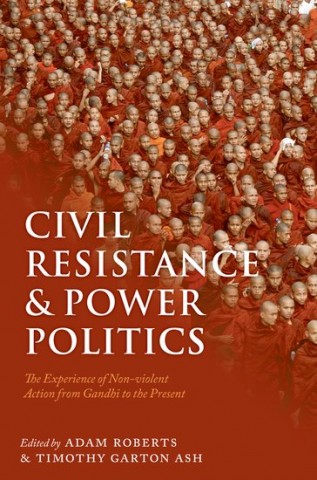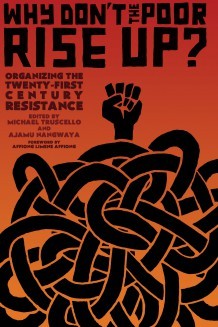Over the last decade there have been quite a number of books published on non-violence action (under a wide range of terminologies: people power, poor people's movements, civil resistance, collective action, etc). A good number of these works start out with the premise that non-violence is the best / only way for political change to occur, and go about crafting arguments rooted largely in that value-based position. I would also suggest that some of these books have misrepresented successful mass movements as being a non-violent movement, to further an argument, when in fact the reality is far more complicated. Although it book me too long to get around to reading it, I was pleasantly surprised with "Civil Resistance and Power Politics: The Experience of Non-Violent Action from Gandhi to the Present" (2009), edited by Roberts and Ash. The book is a collection of case studies and is a valuable addition for anyone interested in learning about the diversity of experiences, tactics and outcomes of citizen action. Many of the chapters are not biased by a value-driven objective to advocate for non-violence, many engage with the violent - or threat of violent - action that were present within and alongside other non-violent movements. The book is a dense 400+ pages of cases and can be summarized, but I highlight a few points that stood out for me (particularly in relation to the existing works on the topic):
- "A seemingly general commitment to the avoidance of violence is almost always in fact selective. The history of non-violent action is full of instances of very careful discrimination in judging the phenomenon that has been the subject of so much sweeping generalization - violence. Both Gandhi and Martin Luther King recognized some modest legitimate role for force." (p. 13)
- "South African mass resistance in the 1980s was far from strictly non-violent. Suspected African collaborators were killed, demonstrators often threw stones, and erected barricades, and in 1985 militant youths battled with some success to create no-go areas in the townships. Moreover, divisions between the ANC and the Zulu Inkatha movement resulted in serious inter-communal violence. Nevertheless, the South African struggle did overall provide an 'A to Z' of non-violent tactics." (p. 36-37)
- "The historical evidence of India's experience of non-violent civil resistance under the over-arching leadership of Mahatma Gandhi raises crucial issues about this mode of conducting conflict. Perhaps above all it shows that this is a political strategy and technique which, for its outcomes, depends greatly on the historical specificities - the nature of the opponent, the characteristics and beliefs of those who seek to use it, their relations with their clientele and with a wider domestic and international audience, and the encompassing ideological and political environment." (p. 56-57).
- "successful movements normally reflect a combination of favourable environmental changes and the creative efforts of activists to recognize, exploit, and indeed, expand the political opportunities afforded them by broader change processes" (p. 65)
- "The Iranian Revolution - like many others - 'came' from below rather than was 'made' from above. There were no statewide parties, no systematic networks, and no coordinated organizations mobilizing the mass protests, meetings, and strikes. On the contrary, the crowds were often assembled by ad hoc groups, grass-roots organizations, and, at most, informal networks: classmates in high schools, colleges, and seminaries; teenagers in the slums; guild members, shop assistants, and, occasionally, mosque preachers, in the city bazaars." (p. 177)
- "it is incorrect to undervalue the contribution of armed movements to Marco's downfall due to their end-game errors. If that radical pole had not existed Morcos might have been able to inflict greater physical harm on his more moderate political rivals. They may even have survived because Marcos turned his attention to the greater threat" (p. 192)
Highly recommended reading for anyone interested in the practice and experience of civil resistance. The is the most comprehensive set of cases I am aware of, and one of the more nuanced books addressing the relationship between violence and non-violence within these movements.


